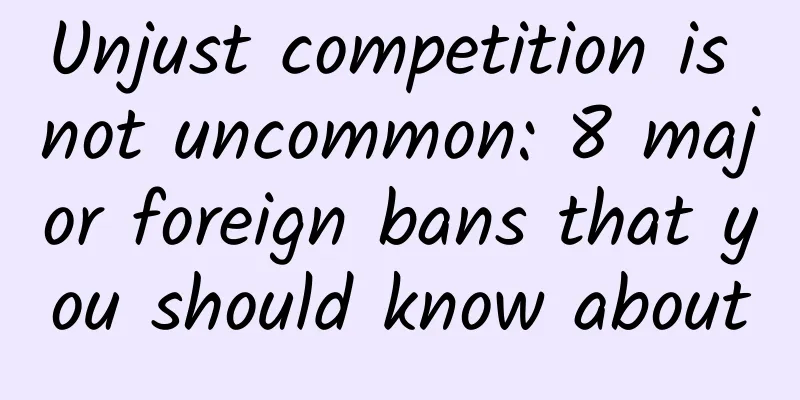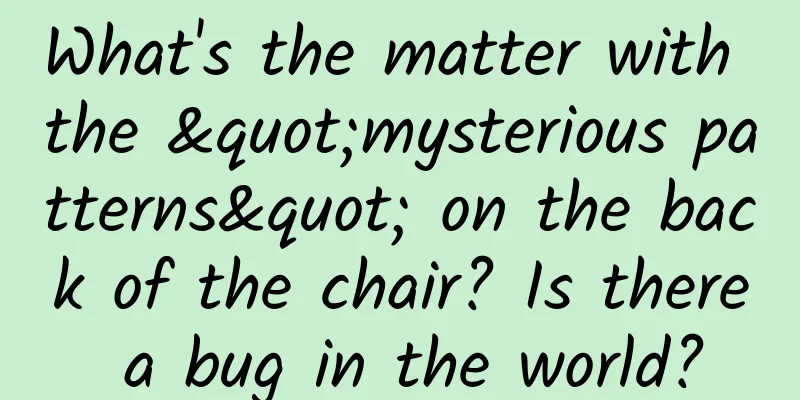When bees move to cities, can humans be good neighbors?

|
When it comes to bees, do you first think of beehives placed on the roadside or in the fields? When beekeepers come, bees will appear. In fact, there are many wild bees around us. The most common one is the social Chinese bee, also called the oriental honey bee. The bees mentioned in this article refer to the Chinese bee. Bees collecting nectar on a willow tree in the city (Photo credit: The author) Some people like bees because they can pollinate plants, maintain ecological balance, and make honey for human consumption. Some people hate bees because they think bee stings are painful and even require medical attention when they are severely allergic. Every year, many people have "close contact" with bees. Bees come to the closets of their homes to build nests, and swarms fly onto quilts or "gather" under the eaves. Why do bees prefer human settlements? How can humans and bees avoid conflict and live in harmony? Bees gather on flower pots (Image credit: Feya) Bee swarms gather on a tree (Photo credit: The author) 1. The colorful world in the city is a big canteen for bees You may think that the natural environment in cities is not as good as in the countryside, and there are not many bees, but according to the author's preliminary investigation, it is easier to see Chinese bees in cities than in the countryside in the plains. In the countryside in the plains, there is nothing but farmland. The high-standard farmland transformation has leveled small plots of farmland into large plots of farmland, and the ridges that were previously full of wild plants have almost disappeared. Coupled with the widespread use of pesticides, there are almost no wild plants in the fields, ridges and roadsides. Modern buildings almost no longer use traditional wood, and villagers no longer plant trees. New rural reconstruction has even cleared away the shrubs and weeds in front of and behind houses. The diversity of plant species in rural areas in plain areas has been greatly reduced. The monotonous plant species in farmland have very concentrated flowering periods and cannot provide honey and pollen sources for bees all year round, so there are very few wild bees. Rural landscape in the plains (Photo credit: taken by the author) In contrast, in cities, there are many plant species, with flowering periods scattered throughout spring, summer, autumn and winter. For example, in the community where I live, there are 85 species of cultivated plants and 45 species of wild plants. Yangchun Lake Park next to Wuhan High-speed Railway Station may not seem rich in vegetation to nature lovers, but in fact it has 318 species of plants. There are many kinds of green plants in residential areas (Photo source: taken by the author) Flowers bloom all year round in Wuhan city. When heather and roses bloom in spring, you can see many bees on the flowers. May to November is the flowering period of white clover, which is planted on many lawns and can continuously provide a large amount of food for bees. Even in winter, the large amount of Mahonia, Aglaonema and Wintersweet in the city can provide sufficient nectar and pollen for bees. Therefore, compared with rural areas, bees in cities have more food. Urban green spaces are rich in flowering plants (Image source: Photo by the author) 2. The city is so big that bees can be found everywhere In the wild, bees usually build nests in tree holes, stone caves or ground holes. According to the research conducted by Thomas D. Seeley, professor of neurobiology and biobehavior at Cornell University on Italian bees living in North America in the 1970s, the ideal nesting environment for Italian bees is a cave with a volume of 14-100 liters, an opening area of no more than 12.5 square centimeters, and the opening is preferably facing south. According to this standard, there are so many places in the city that are suitable for bees to build nests that you may find it unbelievable! The first is tree holes. Many university campuses, old residential areas and roadsides have thick trees, which usually have tree holes large enough for bees to build nests. In particular, tree species such as sycamore, paper mulberry, locust, and willow are more likely to be hollow. It would be even better if gardeners could seal the thick tree holes, because they can never be sealed tightly, and the smaller entrances left are more suitable for bees. Tree holes are the most common nesting sites for bees in nature (Photo credit: The author) The space under the manhole covers in the city is also a basement that bees like. Although it is a bit damp, the space is large enough and the entrance is small enough. In addition, the walls of many buildings are hollow. Once there is a small gap that allows bees to fly in, it will become a nesting place for bees. Due to the settlement of backfill soil, there will be cavities under the floors of the first floors of many buildings, and some green spaces will also collapse underground, which may be inhabited by bees. But in the countryside, there are not so many nesting places "made" by humans. Wall holes and manholes are also favorite nesting places for bees (Photo credit: The author) 3. Bees can sting people, so should we still protect them? Cities are densely populated, and people frequently pass by almost every place, so it is inevitable to encounter bees. In cities, people are severely separated from nature, and many people do not know how to coexist peacefully with bees. When they see a bee, they just slap it, which makes them more likely to be stung. Once a bee nest or a swarm is found, people often ask the relevant departments to eliminate it. In rural areas, traditional culture protects the harmony between people and bees. In Zhejiang, Fujian, Guangdong and other places, it is believed that bees coming to build nests in the home can bring blessings and wealth, so they are often not driven away, and some even make traditional beehives as "villas" for bees. Bees are of great significance to maintaining ecological balance. From the perspective of human development, bees in cities are indispensable. Bees pollinate plants and promote plant fruiting. There are many fruit-bearing plants in urban landscapes, which have the highest ornamental value only after they bear fruit, such as Koelreuteria paniculata, Ilex oleifera, and Pyracantha fortuneana. Fruit-viewing plant Pyracantha (Photo credit: taken by the author) Koelreuteria paniculata, a common fruit-viewing plant in cities (Photo credit: taken by the author) Some wild plants cannot produce seeds due to the lack of bees for pollination, and it is difficult for them to reproduce naturally. Seeds and fruits are important food sources for birds and other animals. Without birds, there will be no birdsong and insects chirping in the city, and the living environment will become boring. Therefore, even for the sake of humans themselves, it is necessary to protect the bees in the city. 4. How to resolve the conflict between humans and bees? Protecting bees cannot rely solely on popular science, but also requires fundamentally resolving conflicts between humans and bees. Although popular science can help more people understand bees and reduce the risk of bee stings, it cannot widen the distance between bee nests and humans, nor can it reduce contact, and conflicts between humans and bees have not been reduced. Properties and gardens usually block tree holes and wall holes to prevent bees from moving in, but the blocking method is not scientific enough. The average thickness of the queen bee's chest is 4.45 mm. As long as the entrance diameter is not less than 5 mm, bees can enter and exit freely. For holes such as bathroom exhaust pipes, a cover with a gap width of no more than 4 mm can be installed. For tree holes, as trees continue to grow and the tree body continues to change, the sealing material itself will shrink or age, making it difficult to ensure a tight seal. Compared with blocking the hole, it is more important to fill the internal space to reduce the volume of the hole inside the tree hole and make it no longer suitable for nesting. You can use hay, styrofoam, foam board, and inflatable plastic bags. Blocking the hole and reducing the space inside the hole can destroy the suitable nest site and force the bees to look for nesting places elsewhere. On the other hand, placing artificial nesting boxes suitable for bees to build nests in locations far away from people is equivalent to building resettlement houses for the bees, guiding the bees to build nests in these locations, and also allowing the bees to maintain an appropriate distance from people. Recommended by: Wuhan Botanical Research Garden, Chinese Academy of Sciences References [1] Thomas D. Seeley. Democracy of Bees: How Groups Make Decisions[M]. Translated by Liu Guowei. Beijing: CITIC Press, 2019. [2] TD SEELEY and RA MORSE. THE NEST OF THE HONEY BEE (APIS MELLIFERA L.) [J]. lnsectes Sociaux, 1976, (23): 495-512. [3] Cui Zhuzhu. The neglected wild bee crisis after the battle to protect Chinese honey bees[N]. Southern Weekend, 2019-5-23(B14). Produced by: Science Popularization China Author: He Rui Producer: China Science Expo |
<<: Many diseases can be traced back to bad habits in your life! Check yourself!
>>: Health Science | Rubbing your eyes is so harmful?! Stop it!
Recommend
A must-see for newbies! How can an account with 0 followers sell goods through live streaming?
A few days ago, in an article about the practical...
How to plan an operational topic by taking advantage of hot topics?
Following hot topics is an essential skill for co...
Dongfeng Motor: Dongfeng's new energy vehicle sales in April 2023 were 1,814 units, a year-on-year increase of 46.6%
Dongfeng Motor released a quick report on product...
Sogou promotion account optimization tips!
Sogou promotion account optimization: PC and mobi...
Be careful if you have "little black spots" on your body! People who like hiking, camping, and fishing should pay special attention to this.
Forest outings, outdoor hiking Walking the dog, c...
How to promote on Weibo and how to do Weibo marketing?
Speaking of the most popular platform, we have to...
Zhejiang University team creates new substances, and the results are published in Nature
Ceramics and rubber are two materials that we oft...
App Store keyword algorithm adjustment: popularity increased, vocabulary expanded, and coverage increased!
Over the past weekend, we monitored that some cha...
New media operation—build operational thinking!
New media operations are commonly known as "...
60 data truths about Kuaishou
Many people around him did not expect that Jay Ch...
Sigma is rumored to launch a 24-105mm f/4 DG image stabilization lens this year, which may become a strong rival to Canon
[September 9th news] German website valuetech ann...
Fast-charging people enjoy the world first, Changan Lumin 301km fast-charging model officially launched at 61,900
On October 18, Changan Lumin 301km Miqin model (f...
How much does it cost to develop a marriage and love mini program in Longyan?
The main factors affecting the price of mini prog...
Summary of the latest information flow advertising platforms in 2017
Feed ads are a form of advertising that is inters...
The "whitening secrets" you've heard of are useless! Check out these 3 tips, they can really whiten your skin, and they're safe!
As the saying goes, a white complexion hides a hu...









